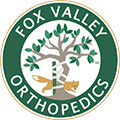To Learn More
(630) 584-1400


Normally, when viewed from the front or rear, a person’s spine appears straight. Scoliosis causes it to curve laterally (to the side). Although it may affect any part of the spine, thoracic (chest) and lumbar (lower back) scoliosis are most common. Several factors influence the onset of scoliosis, which is particularly prevalent among young people approaching puberty.
Scoliosis refers to irregular curvature of the spine.
Scoliosis frequently sets-in during the period of rapid growth and bodily changes, usually occurring shortly before puberty takes hold. Conservative treatment includes exercises designed to strengthen and straighten the spine. Braces may also be used to halt the progression of the curve and support normal growth.
The exact cause of scoliosis isn’t always known, but certain factors increase risk for developing the condition. Scoliosis may be related to these contributing causes:
Idiopathic scoliosis is the most common type of the disorder, occurring without identifiable causes. Lacking another explanation, idiopathic cases of scoliosis are thought to be inherited.
Scoliosis occurring in children may show these signs and symptoms:
Call (630) 584-1400 to schedule an appointment with a scoliosis specialist.
To Learn More
(630) 584-1400Our specialists have the knowledge & experience to get you back to living life.
Providing excellent care, innovative surgeries, at up to 60% less out of pocket cost.
Welcome to Fox Valley Orthopedics’ patient portal.
Providing excellent care with the convenience of being close to home.
